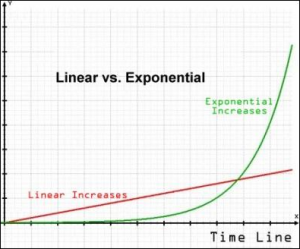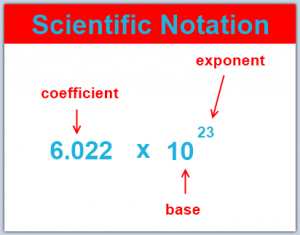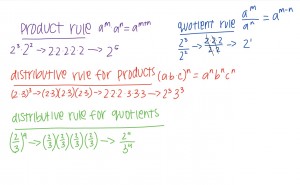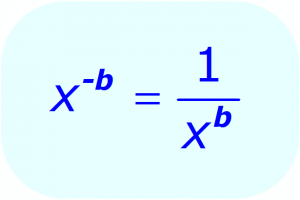Blog 27: Linear vs. Exponential Growth
In math class today we learned about the difference between something that is linear and something that is exponential. You can find both of these in graphs, tables and equations and I will be explaining what that looks like in each of those situations. First of all linear equations are normally written in mx+b form while exponential equations are written with an exponent and an easy way to remember this is by looking at the name because it has the word exponent in it. You will also definitely see the difference between the two because a linear line on a graph is straight and doesn’t have any curves but an exponential line starts off going pretty straight then all of a sudden it starts to curve up. If you don’t know what I mean right now you will see in the picture below. The last way to see something linear and exponential is in a table. When you see a constant growth of just one number then that is linear but when the table seems to be increasing at a faster pace because the y values are being multiplied then you know that the equation is exponential. Usually linear growths go at a slower pace then exponential growths because they are constant. These are just of the differences of exponential and linear lines.
Blog 28: Scientific Notation
Today in my math class we were learning about scientific notations. First of all let me start by defining it. Basically a scientific notation is something that is written as a decimal between one and ten multiplied to the power of ten. This may sound confusing but can actually be quite simple as shown in the example below. Something else we learned today was the difference between the two numbers shown below in the picture. One difference is that they are both written differently resulting in two different answer. Another difference is that the the exponent need to be over the same number in order for the two numbers to be the same and in this case one exponent is over the three and the other exponent is over the ten.
Blog 29: Simplifying Exponent Expressions using the Product and Quotient Rules
There are many different ways to simplify problems with exponents but it can get confusing at times. This week in math class we were learning about these different ways. The product rule is one of the first ones we learned. It is when you multiply the two exponential expressions but base always stays the same. Another rule is the distributive rule for products where you have two different terms that are raised to the same power so you would distribute to both. A similar but is the distributive rule for quotients. Tis is different because when the auotient is raised to the power the numerator and te denominator are both raised to that power as well. The last rule is the quotient rule. This is applied when you divide two exponential expressions with the same base then subtract the exponents and jeep the base. These are all different ways to simplify exponent expressions.
Blog 30: Negative Exponents
You might know what a normal exponent looks like but have you ever seen a negative exponent? Do you know what it means? This is what we learned today in class. Just because you have a negative exponent it does not mean that the number is negative as well. The exponent just shows how many numbers out if all of them are going to be taken away. Just like in the example below the 2-10 doesn’t you subtract ten from two it means you subtract two from ten because they are both the same number you’re just taking away from it.








Leave a Reply